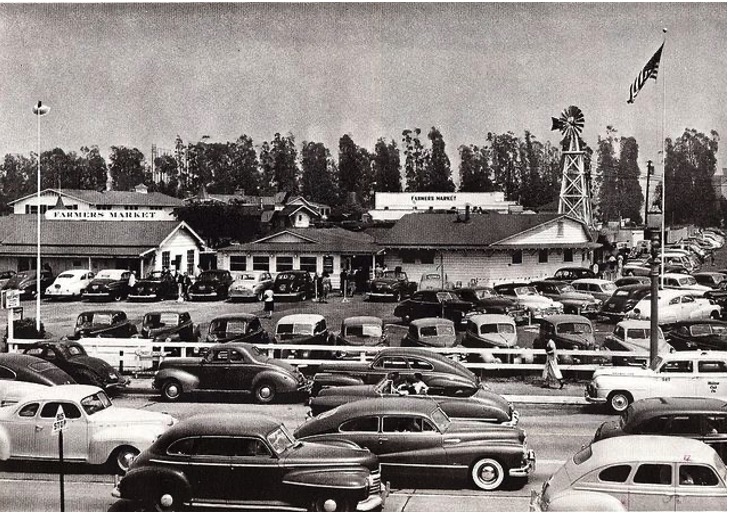Comments
PLANNING WATCH - What Angelenos experience every day, more homelessness and more traffic jams, are hardly a mystery. They do not result from sloppy adopted plans. The major culprit is reflexive top-down City Hall waivers from these adopted plans and their implementing land use ordinances.
This process is on full display in the enormous project and long list of planning and zoning waivers that Hackman Capital Partners requires for its massive but still nebulous TVC 2050 redevelopment of the former CBS Television City site in Los Angeles. Once the City Council grants these waivers, the Hackman group could more than double the size of Television City. Even though they have not offered a site plan for their ever-changing project, its Draft Environmental Impact Report (DEIR) reports that it would add 16,000 more daily trips to Beverly Boulevard, Fairfax Avenue, and adjacent streets.
Whenever the Hackman group decides the specifics of its TVC 2050 project, it could tower over nearby buildings, including Park LaBrea and the nearby Wilshire Boulevard corridor. TVC 2050 also requires the following discretionary planning and zoning exceptions because the Wilshire Community Plan and its 329 page zone change ordinance are 22 years old, with no update scheduled, despite the City Council’s instructions that City Planning update LA’s 35 Community Plans every six years.
· Annex a .3 acre portion of unincorporated Los Angeles County land.
· Adopt a General Plan Amendment and Zone change ordinance for this annexation.
· Adopt a General Plan Amendment to intensify this site’s land use designations to Regional Commercial. (Note: this request is on hold.)
· Establish a Sign District.
· Adopt a 46 page zoning overlay ordinance for the TVC 2050 site, called a Specific Plan.
· Adopt a 20-year Development Agreement for any future project.
· Adopt a Vesting Tentative Tract Map to merge and subdivide the underlying land and to establish a haul route for excavated dirt.
· Apply for other discretionary and ministerial permits that might be needed.
Once the City Council adopts these planning and zoning waivers, they will increase the market value of the TVC 2050 site. The Hackman Group can then cash in their chips if they are unable to develop a profitable project.
TVC 2050’s zoning and planning exceptions will also increase traffic congestion since this neighborhood’s public infrastructure is old. Fairfax Avenue dates back to the 1930s, and Beverly Boulevard was last widened 40 years ago, long before the Hackman group bought the TVC 2050 site from CBS.

The TVC 2050 area was already gridlocked in 1947.
Investors who will financially benefit from these zoning and planning waivers claim that homelessness and gridlock “are the price of progress.” But these adverse outcomes are totally avoidable. The community group, Neighbors for Responsible TVC Development, has proposed exactly how Hackman’s TVC 2050 project could delete 700,000 excessive square feet to become compatible with the surrounding neighborhoods. They argue that as is, the City Council’s approvals of the Hackman’s Group’s requested zone and plan exceptions will flood the area with even more traffic and more homelessness.
Once the City Council grants the TVC 2050 project’s multiple planning and zoning waivers, Hackman Capital Partners will benefit financially because the value of this property will soar. This gives them two ways to profit. First, they can sell the old CBS site to another developer, but at a higher price. Second, they can hold onto the property and slowly develop TVC 2050 over 20 years, based on unpredictable market forces.
Conclusion: This project demonstrates how market trends have become the primary planning tools in Los Angeles. Official plans, like the 2002 Wilshire Community Plan, are ignored and allowed to waste away. In their place waivers from adopted zoning ordinances and official plans, like those requested by Hackman Capital Partners, are LA’s real planning tools. Private profitability, not public benefit, now determines LA’s future, similar to other large US cities. Even though this scenario is marred by infrastructure decay, homelessness, and traffic congestion, developers and their supporters shrug their shoulders while they hawk the next real estate deal.
(Dick Platkin is a retired Los Angeles city planner who reports on local planning issues for CityWatchLA. He is a board member of United Neighborhoods for Los Angeles (UN4LA). Previous columns are available at the CityWatchLA archives. Please send questions to [email protected].)
















